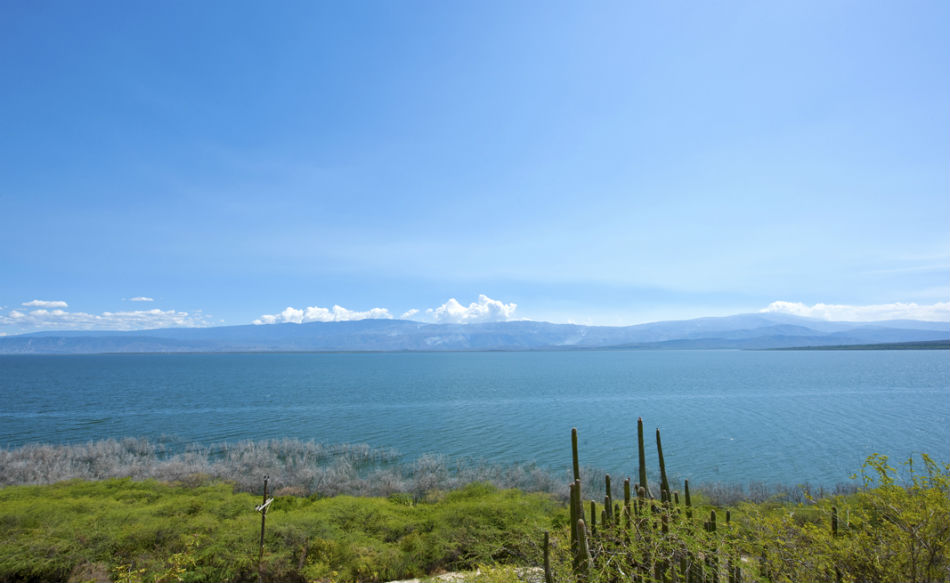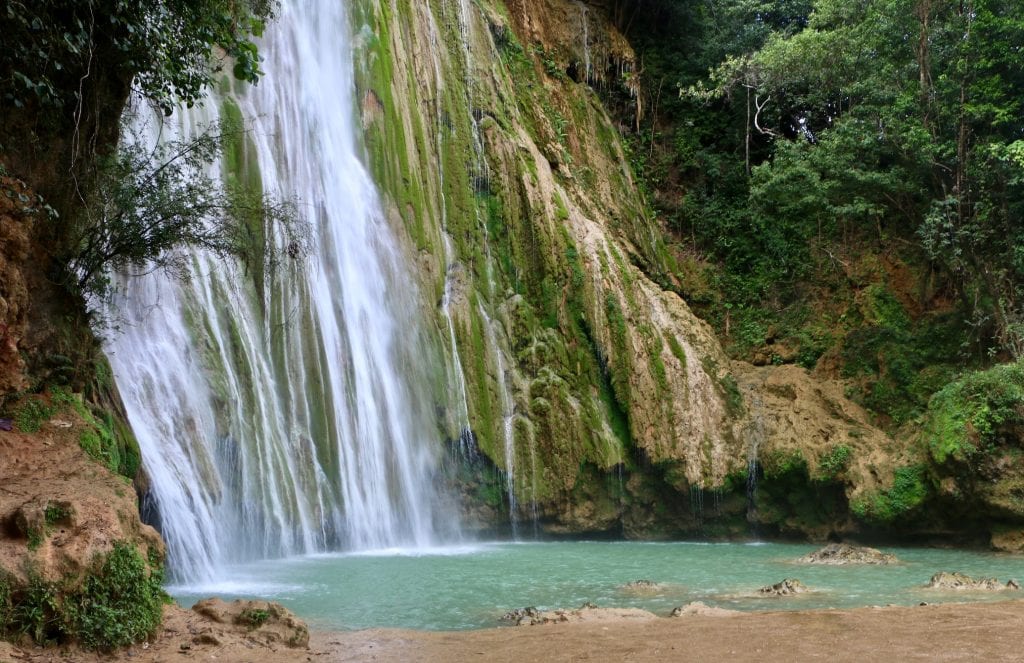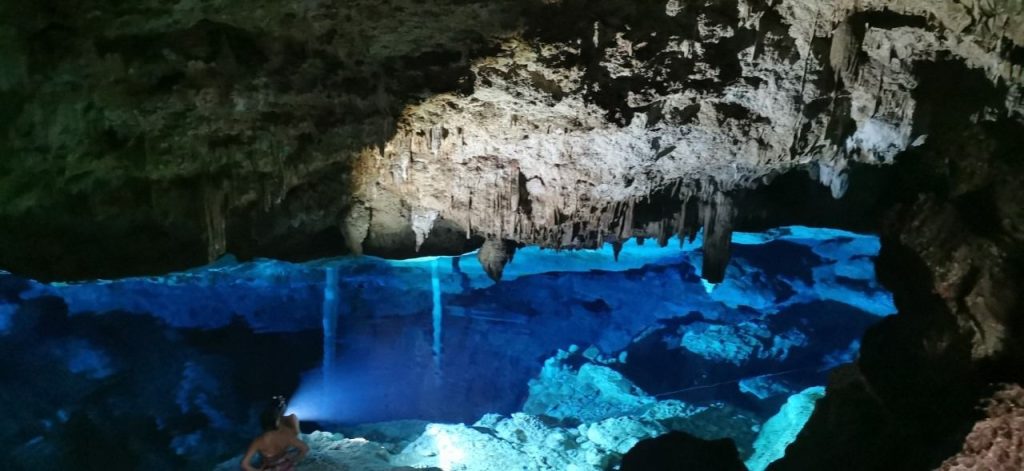Hidden Paradises: Discovering the Natural Beauty of the Dominican Republic
The Dominican Republic, a destination famous for its white sand beaches and crystal-clear waters, is also home to lesser-known natural gems that promise an unparalleled ecotourism adventure. This Caribbean country, rich in biodiversity and varied landscapes, offers a range of experiences for those eager to discover its most kept secrets. From pristine beaches to hidden waterfalls, every corner invites exploration and wonder.
Playa Diamante, in Miches, is a clear example of these hidden treasures. Its white sand and shallow waters make it a paradise for swimming and enjoying the tranquility away from the crowds. Likewise, Salto de Jima offers an escape to the heart of nature with an impressive 40-meter-high waterfall, accessible after a walk through the tropical forest, showing the essence of ecotourism in the Dominican Republic.
Lake Enriquillo, not only stands out for being the largest and saltiest in the Antilles, but also for its rich biodiversity, including flamingos, iguanas, and crocodiles. Meanwhile, the Baní Dunes present an unusual desert landscape in the Caribbean, where you can take camel or buggy excursions, emphasizing the diversity of ecotourism activities in the Dominican Republic.

Los Haitises National Park, with its mangroves, tropical forests and caves, and the Hoyo Claro Natural Monument, a cenote with crystal-clear waters, are perfect examples of how ecotourism in the Dominican Republic can offer both aquatic and land adventures. The Río Partido Waterfalls, with its set of waterfalls in Puerto Plata, and Trudillé, a small fishing village, are destinations that highlight the authenticity and natural beauty of the country.
The Chicho Cave, with its rock formations and cave paintings, together with El Limón, an ideal town for ecotourism and hiking, demonstrate the cultural and natural wealth of the Dominican Republic. These places, although less known, are essential to understand the diversity and potential of the country in terms of ecotourism.
By opting for ecotourism in the Dominican Republic, you not only enjoy spectacular landscapes and unique experiences, but you also contribute to the conservation of the environment and the well-being of local communities. It is an opportunity to reconnect with nature, learn about biodiversity and local culture, and participate in sustainable activities that minimize the impact on the ecosystems visited.
The Dominican Republic offers much more than beaches and sun; It is a privileged destination for ecotourism, where travelers can discover hidden destinations of unparalleled natural beauty. These hidden paradises invite you to explore, learn and live unforgettable adventures, while promoting conservation and respect for nature.
Unforgettable Natural Adventures
Ecotourism in the Dominican Republic translates into a wide range of activities that promise unforgettable experiences, connecting visitors with nature in a deep and respectful way. The diversity of landscapes, from mountains and forests to beaches and rivers, facilitates endless outdoor adventures, all designed to satisfy travelers’ desire for exploration and adventure.
One of the most exciting aspects of ecotourism in the Dominican Republic is the opportunity to hike trails that wind through tropical forests, leading to hidden waterfalls like Salto de Jima. These treks not only offer the opportunity to admire the scenic beauty of the country, but also to spot a variety of endemic flora and fauna species.
Snorkeling and diving are emerging as favorite activities in places like Playa Diamante, where the crystal-clear waters reveal a vibrant underwater world, full of colorful coral reefs and a diversity of marine life.
These experiences allow travelers to literally immerse themselves in the natural beauty of the island, highlighting the richness of the Dominican aquatic ecosystems.
For those seeking more intense thrills, the Baní Dunes offer the opportunity to experience the Caribbean desert through exciting buggy rides or hikes through this extensive system of white sand dunes.
This unique contrast between desert and sea underlines the geographical diversity of the Dominican Republic and makes it an exceptional ecotourism destination.
Exploring Los Haitises National Park provides a window into the country’s varied ecosystems, from mangroves and humid forests to impressive rock formations and ancient caves with Taíno pictographs.
Boat or kayak excursions through the mangrove labyrinths are an excellent way to appreciate the ecological and cultural importance of these habitats.
Ecotourism in the Dominican Republic also embraces birdwatching, especially in protected areas such as Jaragua National Park, where enthusiasts can spot rare and endemic species in one of the island’s most pristine environments.
These types of activities highlight the country’s commitment to conservation and environmental sustainability.
These natural adventures are not only a way to enjoy the beauty and diversity of the Dominican Republic, but also a means to educate and raise awareness among visitors about the importance of protecting natural environments.
Through ecotourism, the Dominican Republic offers an enriching and conscious travel experience, where adventure meets conservation.
How to Get There: Your Gateway to Paradise
For those looking to immerse themselves in the adventures that ecotourism in the Dominican Republic has to offer, knowing how to get to these hidden paradises is essential.
From the capital, Santo Domingo, to the cities closest to the aforementioned destinations, I will guide you through the most practical routes and recommendations to make your trip a smooth experience.
To get to Playa Diamante from Santo Domingo, the most common option is to take the Coral highway to Miches. This trip lasts approximately 2 and a half hours, revealing picturesque landscapes along the way.
Once in Miches, following the local signs will take you directly to this hidden gem.
El Salto de Jima, located near Bonao, is accessible from Santo Domingo via the Duarte highway.
Upon reaching Bonao, you take a detour inland following the signs to the waterfall. This route immerses you in the heart of the Dominican countryside, where the ecotourism adventure begins before you even arrive.
For enthusiasts who want to explore Lake Enriquillo, the trip from Santo Domingo can take around 3 hours by car, passing through the picturesque southwestern region of the country.
The route to the Baní Dunes, on the other hand, is considerably shorter, with this destination being accessible in less than 2 hours from the capital.
Los Haitises National Park, a mosaic of biodiverse ecosystems, is most accessible from the city of Samaná. From Santo Domingo, take the Juan Pablo II Highway directly towards Samaná and from there, organized boat excursions take visitors to explore this national park.
This trip is not only a transition into pristine nature, but also an opportunity to enjoy spectacular views of the bay.

Finally, for those seeking the serene charm of El Limón or Cueva de Chicho, Samaná acts as the starting point for these adventures. Whether you choose to arrive by car or via public transportation, the Samaná Peninsula offers well-established routes that will take you to these attractions.
Planning your trip in advance, considering these routes, will not only facilitate your arrival to these ecotourism destinations in the Dominican Republic, but will also allow you to discover the rich cultural and natural tapestry of the country along the way.
Practical Tips for Dominican Republic Ecotourism
Embarking on an ecotourism adventure in the Dominican Republic is an enriching experience that allows you to connect with nature and discover landscapes of incomparable beauty.
To ensure a positive and responsible experience, here I share some practical tips that will be useful in your exploration.
Best Time to Visit: The Dominican Republic enjoys a tropical climate year-round, but to avoid hurricane season and enjoy cooler weather, the months of December to April are ideal. During this time, conditions are perfect for exploring nature without worrying about heavy rain.
What to Bring: Stock your backpack with essentials like sunscreen, insect repellent, reusable water bottles, and light snacks.
Don’t forget to bring comfortable walking shoes, preferably waterproof if you plan to visit waterfalls or rivers, as well as a swimsuit to enjoy the beaches and cenotes.
Respect for Nature: As a responsible traveler, it is crucial to minimize your impact on the environment. Follow the established routes during your walks, do not leave trash, and avoid disturbing the local flora and fauna.
Photograph without affecting the natural environment and, where possible, support local conservation initiatives.
Health and Safety: Make sure you are up to date on your vaccinations and consider purchasing travel insurance that covers adventure activities.
Always let someone know about your exploring plans, especially if you decide to venture onto less traveled trails.
Explore Mindfully: Take the opportunity to learn about local culture and communities. Many ecotourism destinations in the Dominican Republic are managed or influenced by nearby communities.
Participating in guided tours not only enriches your experience, but also contributes to local economic development.

By following these tips, your ecotourism adventure in the Dominican Republic will be not only memorable, but also sustainable and respectful of the environment and communities that make this country such a special destination.
Get ready to immerse yourself in the natural beauty, rich culture and unique experiences waiting to be discovered. Read our article about Music from Dominican Republic with usefull information about.